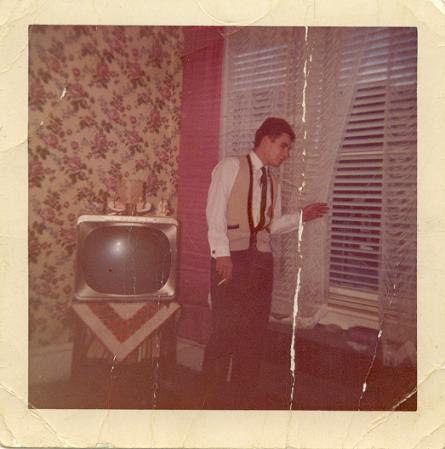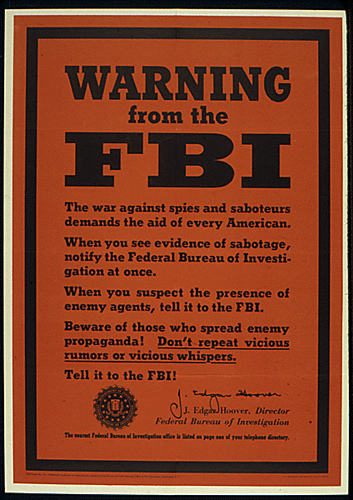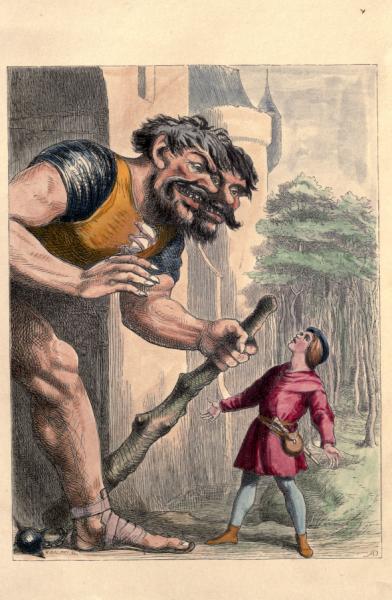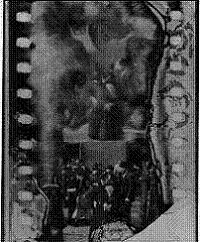
As promised, I am writing from the Charles Simonyi Mixing Chamber, floor 5 of the central Seattle Public Library (SPL), Rem Koolhaas branch. I have investigated a small portion of SPL’s treasures and peculiarities which I will try to describe in brief, and it is already clear that it would be easy to burn a few days in deep study here. There’s a little chocolate and espresso busker on floor three, conveniently located near the welcome desk, that I am sure could make the hours just melt away. I do not have the luxury of time today, though, since I need to return to my friend’s house shortly to begin on a homework assignment that is due just hours after I disembark from my aeroplane in Chicago, some days from now.
First off, the workstation itself: the chairs are all solid orange, retro Eamesesque & molded plastic. This keyboard is surprisingly sprightly, and there’s something really inviting about that. Of course the web browser is Internet Explorer, since, if you don’t already know, this building was funded in part by a Bill and Melinda Gates Foundation largess (though the public’s enormous bond measure accounted for most of the funding). IE is so buggy, and Robotic Librarian is not displaying properly– I need to figure out why, and if this has been the case for any of my readers I apologize — I use Mozilla Firefox to compose and troubleshoot my work. All of the workstations are in an open air hall, with wonderful diamond-shaped views of Seattle’s bright & hazy atmosphere. Every screen is outfitted with those dimming monitor-hiding privacy thingamabobs, and the Internet access is unfiltered unless filters are requested by a parent or guardian. Seattle Public apparently has a custom designed gateway for children which I think is a nice touch; it might even be something fun for kids who get excited about having their own private browser which adults don’t use.
The whole SPL complex is strewn with artworks, some borrowed from other continents, some traditional paint work & sculptural, and some commissioned for the site. My favorite commissioned work is probably the wood planks on the 1st floor, which are covered by Ann Hamilton’s raised & polished sentences culled from SPL’s book collection, showcasing first sentences in eleven languages running backwards and right to left like an enormous printer’s block. There are also strangely intrusive modernist video/electronic works. Tony Ousler’s projected face eggs in a wall space to your right as you descend an escalator from floor 5 to 3 is the most unsettling, apparently babbling (quite loudly) about its current condition, though when I rode past the bald-headed Asian-faced one it accused me of being Empty.

There’s also the compelling OCD-inspired digital artwork on floor 5, dominating the empty space above the IT/reference desk. George Landry’s work is Making Visible the Invisible, continually ticking off numeric data like an opinionated stock market predictor. Six LCD screens tabulate real-time circulation info gathered from SPL branches and display them in four themed visualizations:

- Vital Statistics book, DVD, CD and video check-out stats
- Floating Titles anonymous correlative map of book & DVD (in red) and Cd & video (in green) titles, which allows one to read Dewey Decimal locations spatially on a horizontal plane
- Dewey Dot Matrix Rain where columns of Dewey classifications for circulated books can be read left to right while non-Dewey classified materials fall vertically in a yellow, blue and gentle green rain (a comment on Seattle’s weather, or an attempt to replicate The Matrix‘s famous opening title sequence? Both?)
- Keyword Map Attack showing another Dewey derived digitalscape as a genealogy of keyword designations for checked out books.
I think it is a fascinating artwork, light-years removed from early Lumière actualities when people ran from their theater seats for fear that an approaching cinematic train would emerge from the flickering screen. Legrady’s digital artwork is remarkably suited to our finely networked infosphere and altered ability to read pure data, yet it makes me somewhat uncomfortable. Considering the far reach of different emerging correlation technologies, the vast body of data which summarizes our interests that is being collected by Google and its ilk, and the SPL’s eager adoption of RFID technology, it seems that Making Visible the Invisible could compromise patron’s privacy rights. Not necessarily by what is fleetingly displayed, which is little more invasive than something like the scroll bar on top of Technorati’s main page, but I just don’t know if data is gathered by Legrady’s installation and how it is used.
The library is eleven floors, though only nine are accessible to the general public. The interior of the building has a distinctly European modern art museum feel to it, for me slightly reminiscent of both the Stedelijk Museum near Centraal Station and the Van Gogh museum in Amsterdam’s Vondelpark — the Stedelijk for its austere geometry, and the Van Gogh Museum probably because of all the metal flourishes and oddly proportioned interiors of the Exhibition Wing designed by Kisho Kurokawa and opened in 1999:

However it is the interior detailing which dominates Koolhaas’ architectural achievment, not just the hulking asymmetry of its exterior. There are richly colored yellow escalators festooned randomly about the different floors, which by-and-large bypass the alternative shorter floors of SPLs design. Riding them reminded me in length of some of the disorienting & claustrophobic subway escalators in downtown DC, but with the candy-colored luminescence the ride inspires joy rather than existential angst.

Everything about the organization and planning is noteworthy, and I know that there are detractors but to me the accessibility of its materials is wonderful. (The most noteworthy being the book spiral on the upper floors, allowing for continuous, uninterrupted browsing.) There are so many SPL librarians out and about to help people navigate the space, as well as informational pamphlets, tutorials, and tours. Labels are omnipresent, ambient lighting is emphasized, and ease of use is clearly a guiding operational philosophy. Seattle Public is incredibly playful; learning should always feel like visiting a children’s playground.
SPL is all about orientation of space. No two floors are exact twins, it seems, and the mood of each space is efficiently demarcated. The 4th floor is certainly the most unusual; my post from two days ago opens with a picture of this floor, all bowed, curved and red. Every room on the floor is for meetings, and their interiors are painted a “calming blue” from bottom to top. I was hoping to check out one of the meeting rooms but had to content myself with walking a mesh screened overlook walkway, observing the people sipping coffee and browsing new fiction on floor 3 — no attendent is assigned to the 4th floor on Sundays, and the public tour at noon was canceled due to a shortage of interest.
Instead I decided to focus on two of my goals for the trip to SPL. I wanted to use the Mixing Chamber certainly, but I also wanted to evaluate the extent of their reference business materials. On the way I distracted myself with the 6th floor collection of magazines and periodicals, but let me mention some of the business treasures first.
Initially I was surprised at how small the business collection seemed to be. The shelving was about four feet tall in this section, and though it seemed modest for the size of the library, at least it was divided up into clear, easy to browse divisions:
- Small Business Collection
- Fundraising Resource Center
- Investment and Company Information
- Business Newspapers
- Financial Letters
The financial letters section is the most curious to me, and I still don’t quite understand the term. Are financial letters recommendations and reports from opinionated or respected sources? The titles were equally vague (to me at least) implying the need for insider knowledge about the source before one would chose a particular one: Cabot Market Letter, Chartist, Harry Schultz Letter, John Dessauer’s Investor World, or Prudent Spectator, for example. They’re so fascinating for someone who is eager to learn but unschooled in business literature.
Thinking I was finished evaluating the business resources, I turned around and noticed a tiny sign above a photocopier, talking about the Barry A. Ackerly Business Collection and it’s significance. Around a shaded bend I continued, and this is where the true marvels of SPL’s business holdings make their debut.
I am beginning to appreciate how difficult it is to find certain information about business unless it is studiously current and accurate. So much of the value in data provision and knowledge management is currency coupled with solid analysis. Old business data is often discarded or neglected in order to make room for a percentage of new available data on contemporary industries. In this way the Ackerly collection is a fascinating resource for anyone wanting a deeper, more nuanced understanding of any particular industry.
Many of the Ackerly holdings reach back to the late 18oo’s and early 1900’s, with complete records of stocks, bonds, holding companies, currencies and values that would be impossible to find without access to these primary resources. (ie National Stock Survey from April 10 1929 onward) Many of the works detail older business philosophies, leadership manuals, reports from head offices, and a wall of business serials that stretch forward from the late 1800s.
One of my favorites was the Moody collection, which represents a vast combination of interests and methods of collating data. Moody’s Investment Letters alone seemed to go through about 4 iterations from 1925 to 1960: Moody’s Investment Letters, Moody’s Investor Services, Moody’s Bond Survey, and Moody’s Stock Survey. Perhaps they represented different works, but the dates would not overlap in the sequence and the physical look of the volumes were consistent over time, implying a unified serial. Perhaps my favorite Moody’s series was the early 20th century Moody’s Manual of Railroads & Corporation Securities. Each fat volume spanned a year, and I suspect only a professional basketball player could pick a single volume up one-handed. The accounts of the industry were related both in numerical lists as well as charmingly personal assessments, but perhaps the true find in each volume was the extensive collection of fold-out railroad maps, arrayed regionally. A reference librarian kindly scanned in this sample from the Missouri Pacific Railway for me:
Map of the Missouri Pacific Railway, St. Louis, Iron Mt., & Southern RY, and Leased, Operated & Independent Lines
I wish I could’ve had every last map scanned…
As I said before, I did get distracted on the 6th floor by the magazine collection. Its scope is simply spectacular, and this floor more than any other is where I could imagine losing several years of my life catching up on the past century and a half worth of idiosyncratic & mercurial writings. From lamp annuals to industrial surveys, records of jurisprudence, lifestyle quarterlies, horticultural companions, design compilations, archaeological abstracts and who knows what else, this is by far one of the most compelling collections of magazines, periodicals and journals I have ever gone through.
For one, there is The Leisure Hour from the late 1800s, with continuing articles on “Statesmen of Europe,” unusual travel surveys of England and rather uncomplimentary ones of the States, a great illustrated article about microscopic life called “More Marvels in Mud,” the oddly placed sub-Victorian poem, and great little collections of Varieties:
Electric Road Car. — In the final week of October 1890, a long car or omnibus propelled by electricity made a first public journey in London upon the Kilburn and Maida Vale road. The steady, noiseless progress of this novel conveyance was a surprise to those who witnessed the passage of the well-laden vehicle as it glided along the level way. If the venture is successful, the change from horse-drawn vehicles will be welcomed. Road steam-carriages are, on some accounts, objectionable in cities, but the electric car seems well adapted for passenger traffic. In a recent number of the “Daily Graphic” an account of the earliest road steam-coach was reprinted (with an illustration) from the “Saturday Magazine” of October 6, 1832. The writer described his journey in this conveyance–invented by Captain Ogle, R.N., and Mr. Summers–from Oxford to Birmingham.
I love it so much. If you ever come across one of these gorgeously printed and illustrated magazines you should spend a little time with it, they’re very charming.
They seem to have an enormous number of early machining trade journals, which is, I must admit, for my collage-making and for my interest in design, one of my numerous fetishes. A genuine treasure, from the oversized portion of their stacks, is a lengthy run of the Oil, Paint & Drug Reporter from the early part of the 1900s. The ads alone are worth the ticket, and the reports on trade & investment news range from the numbingly banal to the curiously cracked, with a typical report in 1903 sounding like this:
Glue
There continues a good demand for domestic grades, and the outlook is favorable to a large business up to the beginning of warm weather, as consuming industries are very busy. There is a steady tone to the market, and we hear of no change in prices.
What exactly is a “consuming industry”? Is that a Britishism for chemical or industrial industry? Isn’t every industry technically a consuming one, after a fashion? The periodical reports of “Drug Trade Bowling Scores” were also peculiar. At first I thought it meant something else, something mysterious and out of fashion, but no, they literally were the collected scores of competing drug trade teams. Is bowling the golf of the drug trade? Who knew? In 1903 Johnson & Johnson was hot, repeatedly beating the pants off of teams such as the NY Glucose Company players, though interestingly of all the scores I saw no individual player topped 200. Has every living sport gone through the same upward curve in gross skills? I just think about a 50s football team playing a modern one, and it would be ugly…
Well, the Mixing Chamber only permits an hour of use, and this post was not finished by then. I didn’t realize how much there would be to tell from my short visit. I haven’t even gotten into the 2nd floor vacuum-tube, RFID-supported, SPL robotic material sorting conveyor system, but I think that deserves a post all by itself.

In the meantime, I hope I conveyed a bit of the Willy Wonka quality of the Seattle Public Library, and I may have a follow up post when I have more opportunity to look over all the materials I gathered while there. While it’s not necessarily a replicable library model for even the most well-to-do public library systems, there is much to inspire and provoke in their organizational philosophy. I feel like SPL stands as a public affirmation of the value of libraries, at a time when the profession is being uncomfortably stood before a mirror in the public square; we are rapidly learning how to properly value and promote ourselves while redefining our service and ethical values for a more openly vocal & diverse patron base as well.




 Posted by Vaucanson's Duck
Posted by Vaucanson's Duck 





























